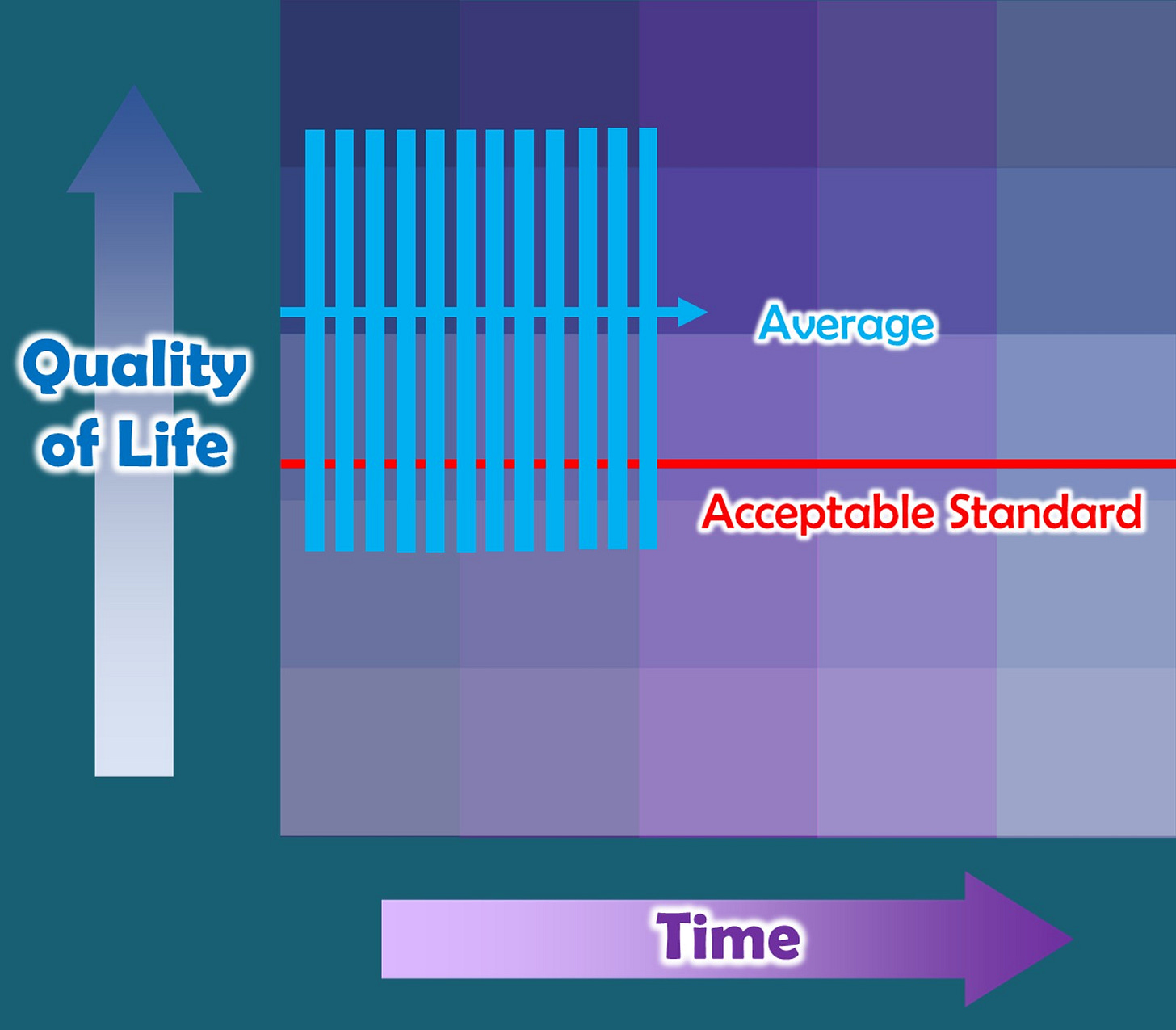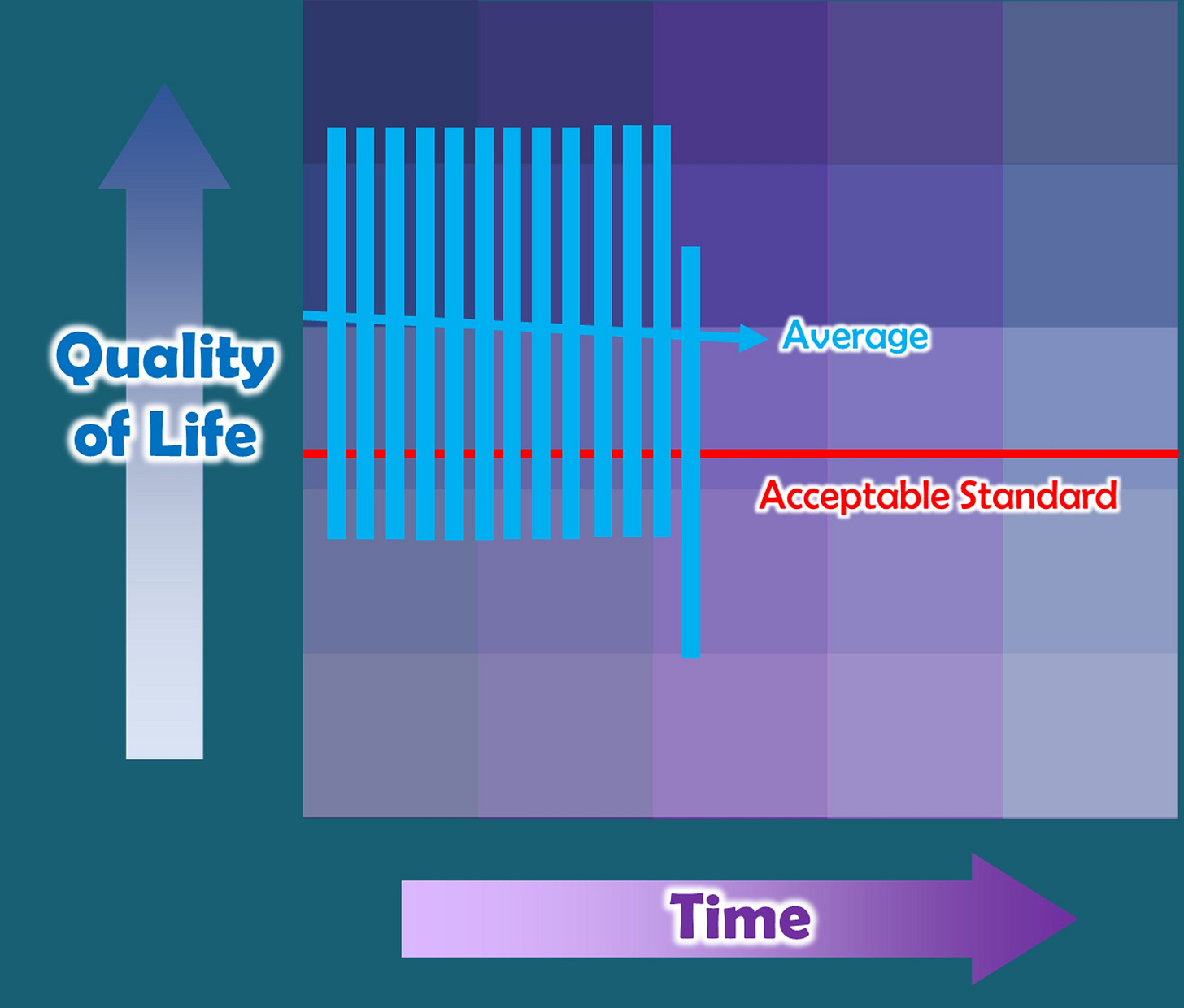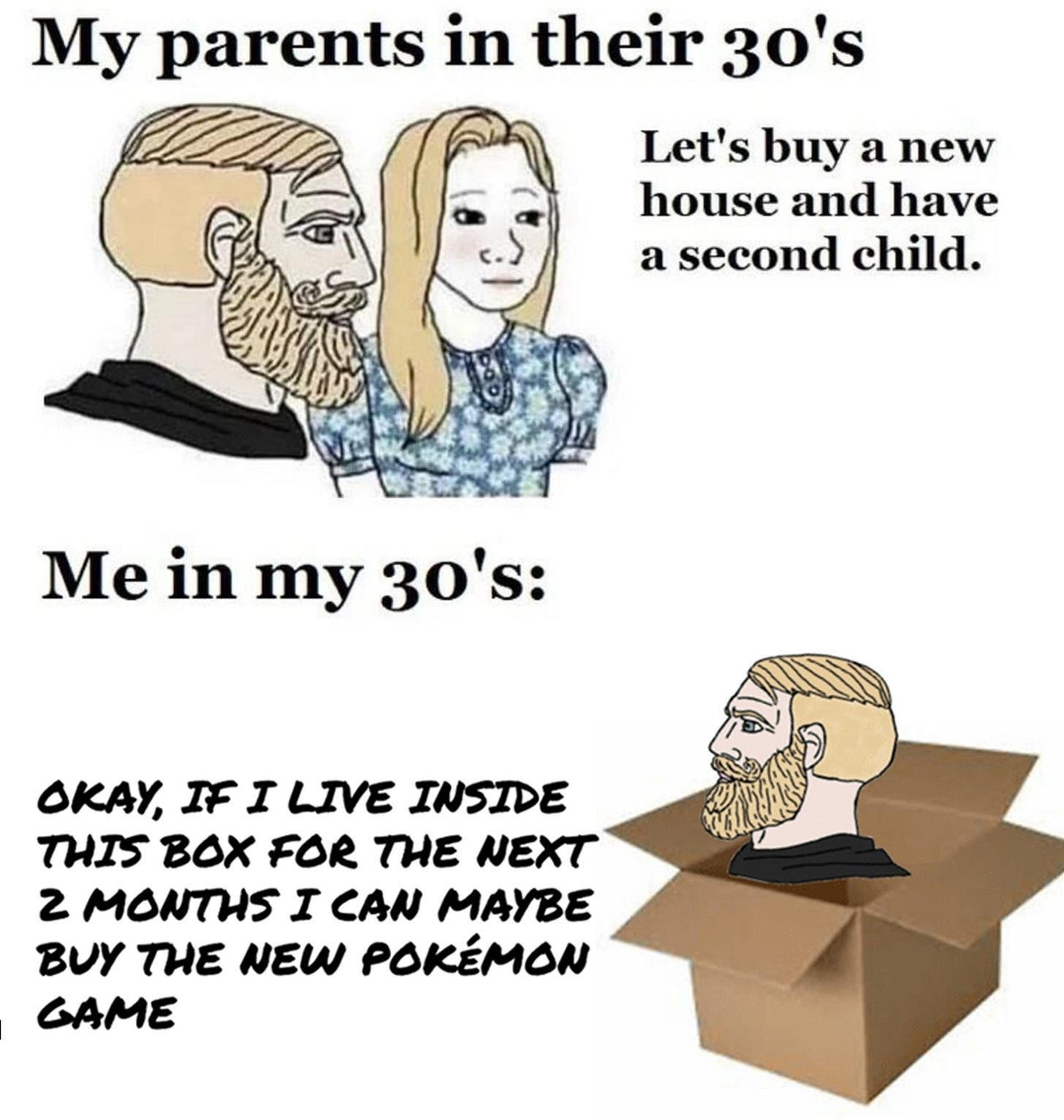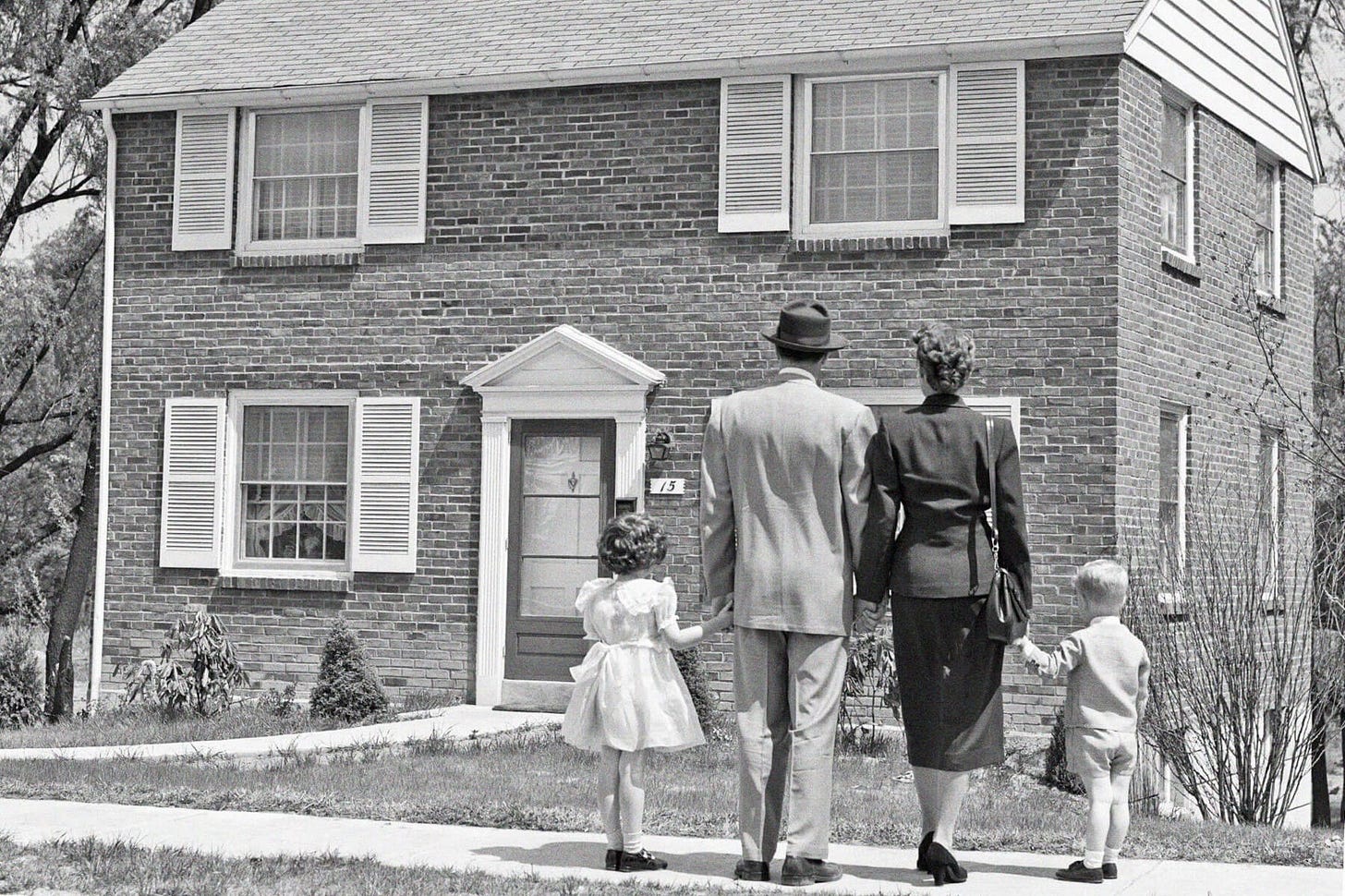Time for another in what’s become a meandering series of posts around a general theme. The original concept was organic socialization in a time of systemic collapse and paradigm shift. Between declowning and the looming AI transformation, it seems obvious that our online-dominant socio-culture is going to change in significant ways. The new infotech part is too soon and radical to say much about now. But if any of the autarchic directional stuff - production, meritocracy, health, etc. – happens, reality-based socialization gets more important. Those able to flow between online and IRL seem best positioned for whatever comes. And that calls up the last paradigm shift – the rise of Clown World, and the implications of that for social status. Meandering.
The point.
Onset of Clown World → NUC socio-economic collapse of varying intensities
With profound effects on social status dynamics as Gen X → adulthood. Sometimes radical shifts more stark than what we see today, despite the worse prospects overall. Generalize a bit.
Children playing in the street, USA, 1958
Boomers moved from a semi-feral childhood → adult ease. Semi-feral meaning lots of independence with a stable home life and institutions. There was a status shift with adulthood as a relatively organic youth gave way to House of Lies pantomime. The Dazed and Confused posts on the Band map this out with the later boomers. It’s where that incessant “wait until you get into the real world” refrain comes from. But none of the savage winnowing of Clown-powered outmigration and income stratification that followed.
Millennials were shaped in boomer-dominant institutions and deprived of childhood independence. Clown is all they’ve known. It’s why so many of them seem so hapless in the face of uncertainty. There never was an organic status to winnow.
Gen X got caught in-between. The most feral childhood, since boomer neglect beats silent/greatest indulgence. And then into the dawning Clown World. On the plus side, possibilities for insight always come when frames are juxtaposed. Alternatives turn them from unnoticed and all-encompassing to a defined option. This gets more valuable as the current system collapses and old expectations and assumptions change or vanish..
Gregory Crewdson, Untitled, 2003, photograph, Gagosian Gallery
What made the effects hard to see was the slow, generational nature of it. Boomers made it up the ladder and started households while reasonably young. Meaning decades of timeless-seeming suburbs preserving the illusion of timeless stability. Same house on the same street we grew up on for what seemed like forever. Except when the parasitic hedonists had to find themselves and liquidated it for nickels on the dollar in the divorce. Pointing to a larger observation about statistics and change. Basically, socio-cultural index stats are slow because they’re aggregated and impacts are more individual.
Some generalizations. Assume each blue rectangle represents a group of people entering the workplace/housing market. It’s assuming a rough equality in the overall average quality of life for simplicity. In reality, things ticked slowly upward. An acceptable standard of living just that. Sustaining organic traditional cultural levels.
Things like housing costs and compensation levels include the entire population. If prices spike or absolute wages drop, this disproportionally affects those starting out from that point.
But the average is made up of all the people basically grandfathered under the old norms. Year 15 of a 20 year mortgage, grandparents’ rent-controlled apartment they’ve been in forever, and whatever else hides the new starting point.
Zoom in.
For the impact to register as critical, time has to pass. The way the housing issue is finally gaining traction now. The inability to project implications is infuriating to information learners. The only solution is cultivate detachment because this is a consequence of mass CLI.
Anyhow, the apparent boomer timelessness as backdrop made the Clown impact less obvious. To CLIs anyhow. These trends are among the things that made my younger self check out. Which doesn’t change the fact we started the trend of getting priced out. Pushed to outer ring tract housing down to whatever affliction the young face now. Those who managed the credential → position kabuki of the “new economy”, that is.
Living at home started down the road to cliche with us. Historical generalization. The ancestral home was the Western norm for most of post-classical history. Lords to serfs were bound to a piece of land. The Prodigal Son resonates because “coming home” is so hardwired. Modernity brought atomization. The new model being leave and establish your own. It’s tied to industrialization and urbanization. Waves of people coming to cities are fresh starting by definition. This was viable in the twentieth century because the income to housing ratio made fresh starts accessible. The second half of the century saw a different migration, from urban flats to suburban houses. This ended with the boomers, but they were young enough that most Gen X and Millennials experienced mid-20th century family style family homes.
If The Script doesn’t resolve the housing affordability issue for actual Americans, this won’t be the memory in the future.
The problem was that the jobs that were abundant didn’t support the standard of living abundant jobs used to. Chains and franchises replacing small businesses hurt on two levels. The old model would support proprietors comfortably, while employing youth or locals on the side. But housing was the real killer. I’m a broken record on this one for reasons of statistical slowness noted above.
The pattern from the Jack London era fiction to our boomer parents’ own lives was relatively cheap housing. Blow into town, be washing dishes or on at the warehouse that day, and afford a room. Consider for how long and in how many contexts that was just assumed. It’s one of the preconditions that made American mobility possible. For good or atomized ill. Non-living wage as acceptable norm started with us. The entropic slide continues.
This is long enough. The next stop will tighten focus. Finish by noting this was the first sign of the boomer’s economic war on subsequent generations.
By the fruits. The “reverse mortgage” really wasn’t an thing until Gen Locust started hearing the hounds baying in the distance. Put aside the infantile retardery of having crippling debt heading into the golden years. The notion of liquidating familial wealth to party on into the grave is a historical abomination.
Then consider that the wealth was reward for the cultural atavism and SJW malignancy that kneecapped their kids.
Giotto, Judas' Betrayal, 1304-06, fresco, Scrovegni Chapel, Padua
Organic community is cyclical on the macro scale. Family sizes correlate to rising and falling prices on a demand curve. But ever-inflating real estate prices were how the boomers avoided the fincialization wealth exfiltration hit that eviscerated everyone coming of age in the post-[40k for waterfront] era. Floating on a small cut of the graft as the Clown World violated their children and chiding the victims about bootstraps.1 Something to consider.
Younger readers can be taken aback by Gen X boomer animus. You had to be there.
















"The inability to project implications is infuriating to information learners. The only solution is cultivate detachment because this is a consequence of mass CLI."
Spot on.